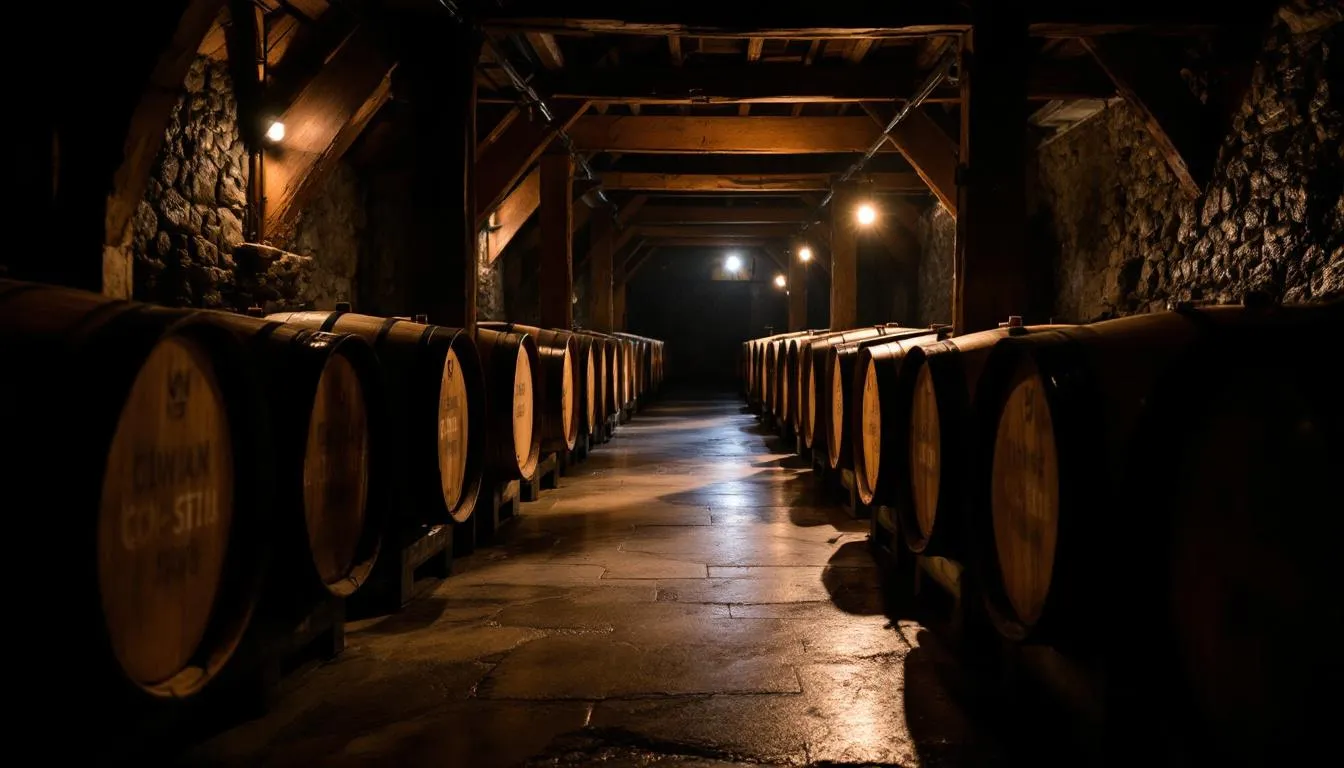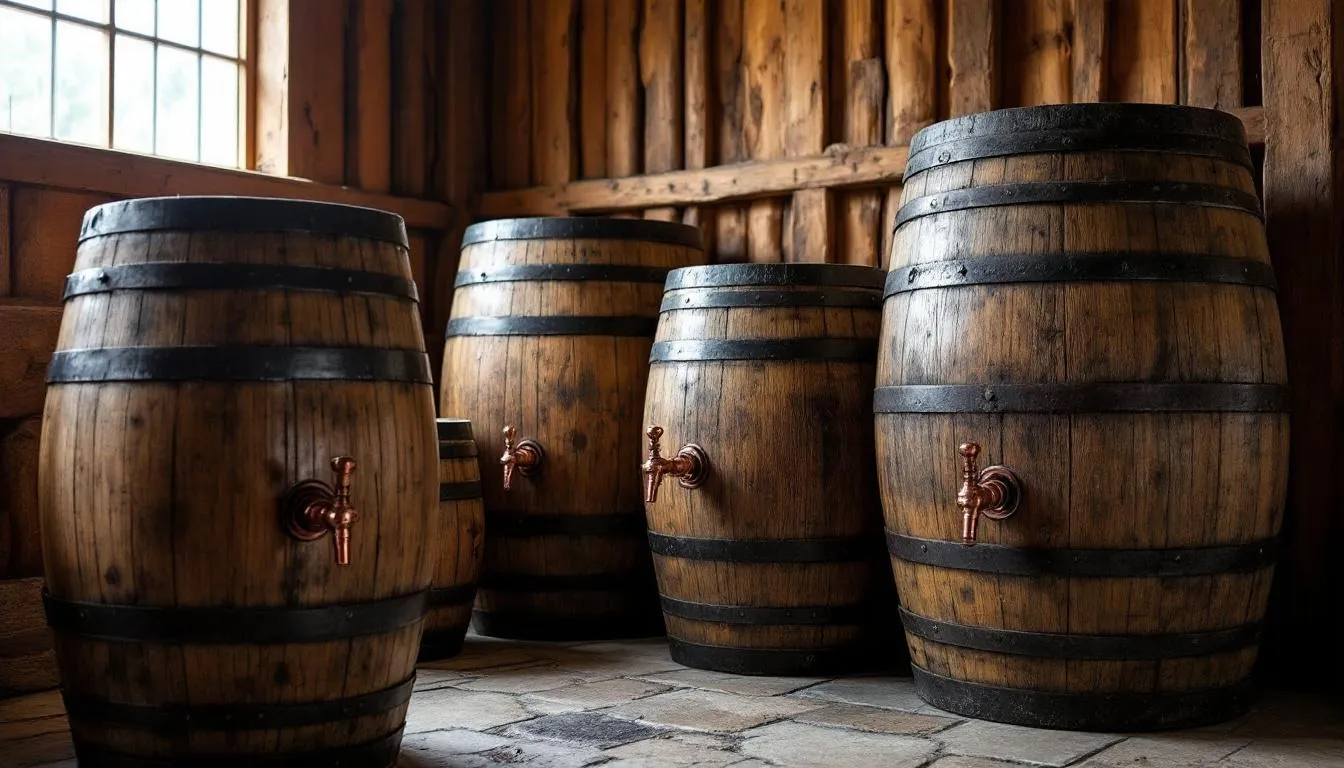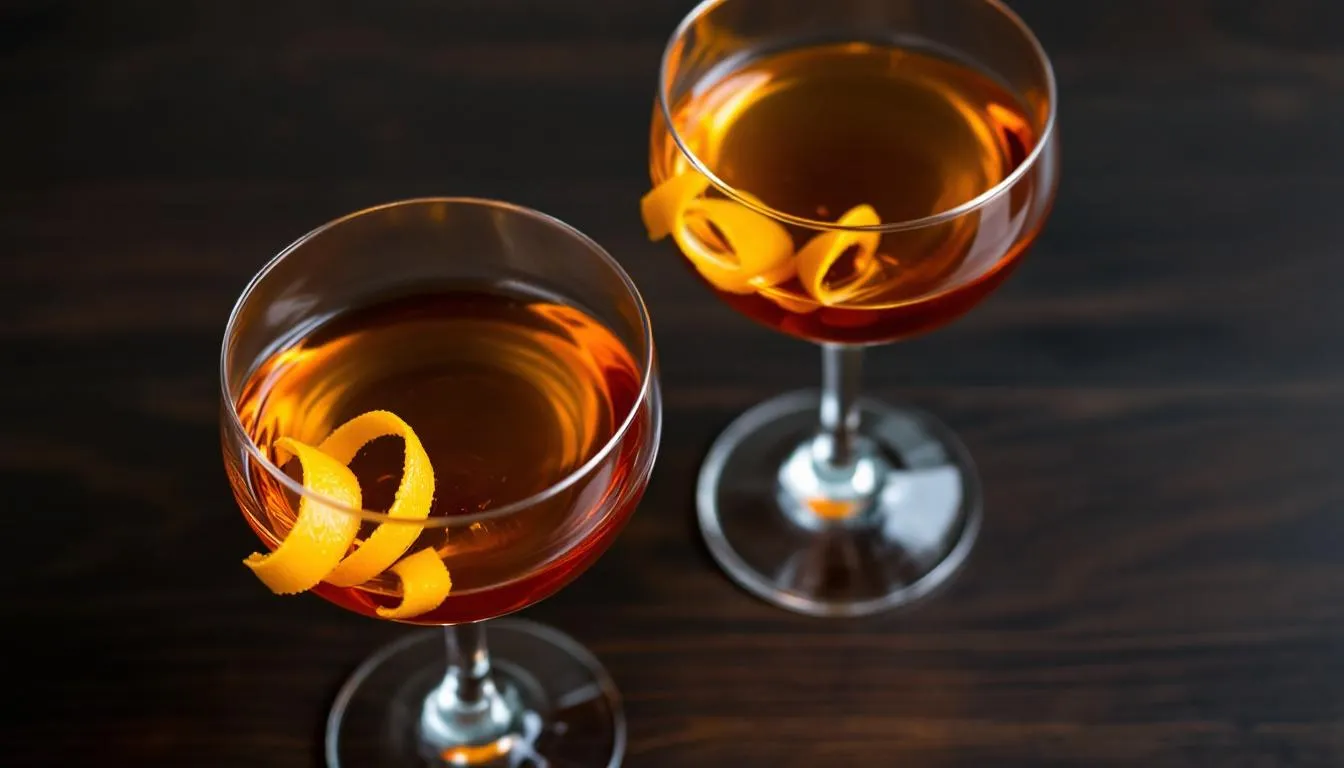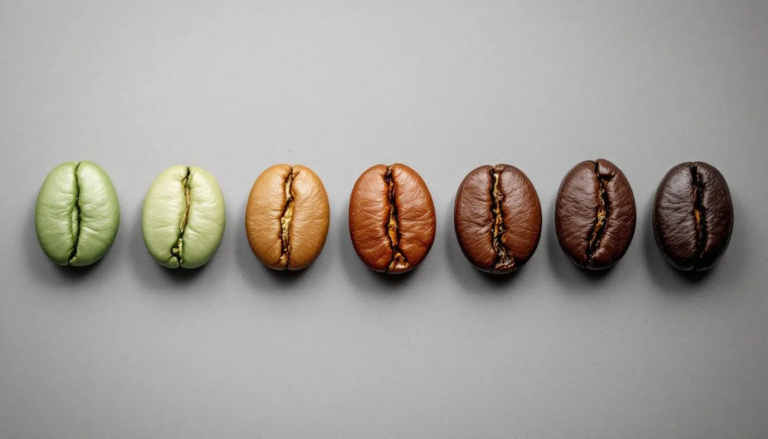The gentle clink of oak against glass signals something extraordinary happening in craft cocktail culture. While most drinks are mixed fresh and served immediately, a growing movement of bartenders and enthusiasts are discovering the transformative power of time, wood, and patience. Cask cocktails represent the intersection of traditional distilling wisdom and modern mixology innovation, and were created as a result of this unique blend of traditions, producing drinks that simply cannot be replicated through any other method.
These barrel-aged cocktails have revolutionized how we think about drink preparation, moving beyond the immediate gratification of fresh mixing to embrace a slower, more contemplative approach. From Chicago’s pioneering establishments to home bars across the country, the art of aging cocktails in oak has become a hallmark of sophisticated mixology. Chicago holds a special place in the history of cask cocktails, as the city’s vibrant cocktail scene and expert bartenders have played a significant role in developing and popularizing this craft.
In this comprehensive guide, you’ll discover everything needed to master cask cocktails, from understanding the science behind barrel aging to creating your own signature cocktails at home. Whether you’re a professional bartender or an enthusiastic home mixologist, the world of barrel-aged drinks offers endless opportunities for creativity and craft.
What Are Cask Cocktails?
Cask cocktails are pre-mixed drinks that undergo aging in wooden barrels, typically made of oak, for periods ranging from several weeks to months. Unlike the immediate preparation of traditional cocktails, these drinks develop their character through extended contact with wood, creating complex flavor profiles impossible to achieve through conventional mixing techniques.
The barrel aging process fundamentally transforms how ingredients interact with each other. Where fresh cocktails maintain distinct, pronounced flavors, cask-aged versions develop integration and harmony. The harsh edges of spirits mellow, bitter components soften, and new flavor compounds emerge from the wood itself. This results in a more balanced cocktail, where the flavors are harmoniously combined for a refreshing and herbaceous taste experience.

This transformation occurs because spirits-based cocktails work best for cask aging. Drinks containing fresh juice, dairy, or eggs simply cannot withstand extended aging without deterioration. Instead, the ideal candidates are spirit-forward recipes like Manhattans, Negronis, and Old Fashioned cocktails – drinks with high alcohol content and stable ingredients that improve with time. It is important to choose the right spirits and ingredients to ensure optimal results when aging cocktails in a cask.
The growing popularity of cask cocktails reflects a broader movement toward craft and artisanal approaches in mixology. Since around 2010, high-end bars have embraced barrel aging as a way to create unique, house-specific drinks that cannot be easily replicated elsewhere. This exclusivity, combined with the undeniable improvement in flavor complexity, has made cask cocktails a sought-after experience for discerning drinkers.
The Science Behind Cask Aging Cocktails
Understanding the science behind barrel aging reveals why this ancient technique produces such remarkable results in modern cocktails. The process involves several interconnected chemical and physical phenomena that work together to transform simple mixed drinks into complex, nuanced experiences.
Wood tannins and vanillin compounds form the foundation of flavor development during aging. As cocktails rest in oak barrels, these compounds migrate from the wood into the liquid. Tannins contribute astringency and mouthfeel, while vanillin, eugenol, and oak lactones impart the characteristic vanilla, spice, and coconut notes associated with barrel-aged drinks. Fresh oak delivers robust flavors, while previously used barrels offer more subtle, nuanced characteristics.
The oxidation process plays an equally crucial role in flavor development. Because barrels are porous, limited oxygen slowly diffuses into the cocktail, transforming harsh and volatile compounds into smoother, rounder flavors. This controlled oxidation is why spirits and cocktails mellow with age, developing the integrated character that defines quality barrel-aged drinks.
Temperature fluctuations create a natural pumping action that accelerates flavor extraction. As temperatures rise and fall, the liquid expands and contracts, pushing deeper into the barrel staves and drawing out more wood compounds. This effect is amplified in smaller barrels due to their larger wood-to-liquid surface area ratio compared to standard commercial casks. To achieve the best results, it is important to apply different aging techniques—such as adjusting temperature, experimenting with barrel size, or even using alternative methods like DIY aging without barrels—based on your desired flavor profile.
The choice of barrel size significantly impacts aging timeline. While traditional distilleries use 200-liter barrels that require years of aging, craft cocktail applications typically employ 2-5 liter barrels that produce optimal results in just 4-8 weeks. This accelerated timeline makes barrel aging practical for both professional bars and home enthusiasts. However, be careful to apply proper methods throughout the process, as common mistakes like over-aging or improper storage can negatively affect the final flavor and quality.
Popular Cask Cocktail Recipes
The most successful cask cocktails share certain characteristics: they’re spirit-forward, contain stable ingredients, and benefit from the mellowing effects of wood aging. The course of preparing cask cocktails typically involves selecting a recipe, preparing the ingredients, and following the specific steps of casking to achieve the desired flavor. Many cask cocktail recipes are also easy to prepare, making them accessible for both beginners and experienced enthusiasts. These classic recipes have become standards in barrel-aging programs because they consistently produce exceptional results.
Barrel-Aged Negroni
The Negroni’s equal-parts simplicity makes it an ideal candidate for barrel aging. The standard recipe calls for equal portions of gin, Campari, and sweet vermouth – typically 750 mL of each for a full batch. The aging process softens Campari’s bitter edge while the gin’s botanical complexity integrates beautifully with oak characteristics.
Age this blend for 4-8 weeks, tasting weekly to monitor development. The finished cocktail develops remarkable smoothness and deeper spice notes that complement the drink’s inherent balance. Serve over ice with an orange peel garnish to highlight the developed citrus and vanilla notes. For added complexity, consider including a dash of orange bitters when serving to further enhance the flavor profile.
Cask Strength Boulevardier
For authenticity, Kentucky bourbon is preferred in this whiskey-based cousin to the Negroni, which uses a ratio of 1.5 parts bourbon or rye whiskey to 1 part each of Campari and sweet vermouth. A typical batch might include 1.5 liters of Maker’s Mark bourbon—a renowned Kentucky bourbon—750 mL Campari, and 750 mL sweet vermouth.
The aging process, lasting 4-7 weeks, allows the Kentucky bourbon’s vanilla and caramel notes to harmonize with Campari’s bitterness. The result is a cocktail where harsh edges disappear, replaced by integrated complexity that showcases both the spirit and the barrel’s influence.
Aged Manhattan
Perhaps the most classic barrel-aged cocktail, the Manhattan uses 2 parts bourbon or rye whiskey to 1 part sweet vermouth, with several dashes of Angostura bitters. Sweet vermouth is a type of fortified wine, which adds depth and complexity to the drink. For a unique twist, Lillet can be used as an alternative to sweet vermouth, bringing a lighter, elegant character to the Manhattan. A standard batch combines 1 liter whiskey, 500 mL vermouth (or Lillet), and approximately 10 mL bitters.
After 6-8 weeks of aging, the Manhattan develops a softer, more integrated profile where the whiskey’s boldness melds seamlessly with the wine’s herbal complexity. The wood contributes subtle vanilla and spice notes that enhance rather than overwhelm the classic flavor profile.
Barrel-Aged Old Fashioned
The Old Fashioned adapts beautifully to barrel aging, though it requires careful attention to sweetness balance. Before you begin, sort all the necessary tools and ingredients—such as bottles, funnels, and measuring spoons—to ensure a smooth process. Make sure you have the right tools on hand for preparing and serving the cocktail. Use 2 oz bourbon per serving ratio with 1/4 oz simple syrup and 2 dashes bitters. For batch preparation, combine 1 liter whiskey, 125 mL honey syrup or demerara syrup, and 20-30 mL bitters.
The 4-6 week aging period allows the sweetness to integrate completely while the wood provides a subtle backdrop that enhances the whiskey’s natural character. The result is a harmonized cocktail where individual components become indistinguishable from the whole.
Equipment and Supplies Needed
Successful cask cocktail production requires specific equipment, starting with appropriately sized barrels. For home use, 1-5 liter barrels provide the ideal balance of manageable size and reasonable aging timeline. These smaller barrels accelerate the aging process due to their higher wood-to-liquid ratio compared to commercial-sized casks.

Oak selection significantly impacts final flavor profiles. American oak imparts bold vanilla and coconut characteristics with pronounced tannins, while French oak offers subtler spice notes with more restrained wood influence. New barrels provide intense wood flavors that can overwhelm delicate cocktails, while used bourbon or sherry barrels contribute layered complexity without excessive tannin.
Essential preparation tools include precision measuring equipment for accurate batching, funnels for clean barrel filling, and fine strainers for decantation. Glass bottles with tight seals – whether swing-top or corked varieties – are crucial for proper storage of finished aged cocktails. If you plan to create cask-aged spritz cocktails, consider storing prosecco separately and adding it just before serving to preserve its sparkling quality. Prosecco is a popular sparkling wine ingredient in many spritz recipes, adding a touch of Italian sophistication.
Quality barrels should feature leak-proof construction with properly fitted spigots and sturdy hardware. Drip trays prevent mess during aging, while storage racks ensure proper airflow and protect barrels from direct sunlight or temperature extremes.
Cask aging can also be used to create unique spritz variations, such as a bourbon spritz or other sparkling cocktails, by infusing base spirits with barrel-aged complexity before combining with prosecco or soda.
Sourcing options include specialized online retailers like Thousand Oaks Barrel and The Barrel Mill, which offer barrels specifically designed for cocktail aging. Local brewing and winemaking shops often carry suitable barrels, though selection may be limited. When choosing suppliers, prioritize those offering pre-toasted or charred options tailored for spirits applications.
Step-by-Step Cask Aging Process
Proper barrel preparation forms the foundation of successful cocktail aging. Begin by inspecting your cask for leaks or damage, then soak it in water for 24-48 hours. This swelling process tightens the staves and reduces potential leakage during aging.
When mixing cocktail ingredients in bulk, be sure to accommodate any special requests or preferences, such as a request for a specific rim type or flavor modification, to ensure personalized service even in large batches.
After draining the soaking water, rinse the barrel with a “sacrificial” spirit – an inexpensive whiskey or neutral grain spirit that removes any residual flavors and prepares the wood for your cocktail. Discard this rinse to ensure your final product isn’t tainted by unwanted flavors.
Cask Preparation Tips
Temperature control during storage significantly impacts the aging process. Maintain your storage environment between 60-70°F (15-21°C) to ensure consistent extraction without excessive evaporation. Avoid areas with wide temperature swings, as these can accelerate aging unpredictably and potentially create off-flavors.
Barrel rotation – a simple half-turn every few days – ensures even exposure of all liquid to the wood surface. This practice prevents uneven extraction and helps develop consistent flavor throughout the batch.
Never allow a barrel to remain dry for extended periods, as the wood may crack or harbor unwanted microorganisms. When not in use, store barrels with a citric acid solution or specialized storage solution to maintain wood integrity.
Mix your cocktail ingredients in bulk using precise ratios, then use a funnel to fill the cask while leaving small headspace for expansion. Store in a cool, stable environment away from vibration and direct sunlight.
Weekly tasting is essential for monitoring development. Extract small samples using the spigot and note changes in flavor, integration, and wood influence. Most cocktails reach optimal development within 4-8 weeks, though this varies based on barrel size, wood type, and desired intensity.
When flavors reach desired balance and integration, decant the entire batch through fine strainers or cheesecloth to remove any sediment. Store finished cocktails in clean glass bottles in a cool, dark place where they’ll remain stable for months.
Tip: For best flavor and presentation, chill the finished cocktail thoroughly before serving. This enhances the drinking experience and brings out the aged cocktail’s complexity.
Flavor Profiles and Wood Selection
The choice of wood type and barrel history dramatically influences the final character of your cask cocktails. American oak, the most common choice, provides bold vanilla and coconut flavors with pronounced tannin structure. These characteristics work particularly well with bourbon-based cocktails like Manhattans and Old Fashioned drinks, where the wood’s intensity complements the whiskey’s natural profile.
French oak offers a more subtle approach, imparting delicate baking spice and toast notes with restrained tannin levels. This wood type excels with gin-based cocktails or delicate blends where wood should support rather than dominate the flavor profile. Cask aging can also produce cocktails with a crisp texture, especially in gin-based recipes, enhancing their refreshing qualities.
New barrels deliver the most intense wood influence, contributing strong toast, char, and tannin characteristics that can overwhelm subtle cocktails. These work best with robust recipes that can stand up to aggressive wood extraction. Used barrels, particularly those that previously held bourbon, whiskey, or PX sherry, offer complex layered flavors without excessive tannin.
Bourbon barrels contribute caramel, vanilla, and warm spice notes that enhance whiskey-based cocktails while adding complexity to gin or rum blends. Sherry casks impart dried fruit, nutty characteristics, and oxidative notes that create unique flavor profiles impossible to achieve with new wood. For fruit-forward cask cocktails, ingredients like pineapple, blackberry, raspberry, lemon, and lime can be used to create unique and vibrant flavor combinations.

Char level – the intensity of the barrel’s interior burn – controls the development of smoke, vanilla, and caramel characteristics. Light chars provide subtle wood influence, while heavy chars contribute robust flavors that can include chocolate and coffee notes. Medium char levels offer the best balance for most cocktail applications.
Professional Cask Cocktail Programs
Chicago’s Aviary restaurant pioneered large-scale cocktail aging techniques that have influenced craft cocktail culture nationwide. Their systematic approach to barrel aging includes precise batching protocols, custom barrel specifications, and rigorous quality control through scheduled tastings.
Professional operations typically employ 5-15 liter barrels that balance efficiency with flavor development speed. Unlike home applications that focus on single batches, commercial programs often blend multiple aged batches to achieve consistency across service periods.
The industry has embraced innovative techniques including multi-spirit blending, alternative wood types like cherry and maple, smoke introduction during aging, and solera-style aging for increased complexity. These approaches allow bars to create truly signature cocktails that differentiate their programs from competitors.
Professional tasting panels evaluate aging progress using standardized criteria, often including multiple team members to ensure objective assessment. This systematic approach helps determine optimal aging endpoints and maintains quality standards across different batches.
Temperature and humidity control in professional facilities ensures consistent aging conditions year-round. Many operations use dedicated aging rooms with climate control systems that maintain ideal conditions for predictable flavor development.
Troubleshooting Common Issues
Over-aging represents the most common problem in cask cocktail production, resulting in excessive tannin, bitterness, and harsh oak flavors that overpower the base cocktail. This issue typically occurs when cocktails remain in barrels beyond their optimal aging window, particularly with new oak barrels that extract compounds rapidly.
The solution involves blending over-aged cocktails with fresh, unaged versions to restore balance. Alternatively, earlier removal from barrels based on weekly tasting notes prevents this problem entirely. Experience with your specific barrel and recipe combinations helps predict optimal aging timelines.
Under-aging presents the opposite challenge, where cocktails lack integration and wood influence remains minimal. Flavors taste disjointed, similar to freshly mixed cocktails without the smoothness and complexity that defines quality aged drinks. Extended aging or smaller barrel use can address this issue.
Barrel leaks commonly occur when wood hasn’t properly swelled or hardware isn’t adequately tightened. Hot water treatment can swell wood further, while spigot and bung adjustments often resolve minor leakage issues. Persistent leaks may require barrel replacement.
Evaporation loss, known as the “angel’s share,” is inevitable during aging. Small barrels lose proportionally more liquid than large ones, typically 3-10% over a 6-week period. Stable storage conditions minimize loss, though some evaporation actually concentrates flavors beneficially.
Contamination from mold or off-odors results from poor sanitation or barrels left empty too long. Prevention through proper cleaning and storage is essential, as contaminated products must be discarded immediately. Regular inspection during aging helps catch problems early.
Serving and Presentation
Proper presentation elevates cask cocktails from simple drinks to memorable experiences. Glassware selection should complement each cocktail’s character – Old Fashioned glasses for spirit-forward drinks like aged Manhattans, while coupe glasses work beautifully for lighter, more delicate aged cocktails.
Temperature plays a crucial role in showcasing aged cocktail flavors. Serve slightly chilled but avoid over-icing, which dilutes the concentrated flavors developed during aging. Cellar temperature service maximizes aroma integration and allows the full complexity to emerge.
Garnish selection should enhance rather than compete with aged characteristics. Orange peel highlights citrus and vanilla notes developed during aging, while cherry garnishes complement darker, more robust aged cocktails. Fresh herbs like rosemary or thyme can add aromatic complexity to specific recipes.

Tasting flights offer guests insight into the aging process while showcasing your program’s expertise. Present the same cocktail at different aging intervals – perhaps 2, 4, and 6 weeks – to demonstrate flavor development over time. Include tasting notes describing each stage’s characteristics.
Storage of finished aged cocktails requires attention to maintaining quality. Keep decanted cocktails in sealed glass bottles away from light and temperature extremes. Most spirit-forward aged cocktails remain stable for several months when properly stored, though flavor integration continues slowly even after barrel removal.
Consider offering “bartender’s choice” aged cocktails that rotate based on seasonal availability and aging schedules. This approach creates anticipation among regular customers while allowing flexibility in your aging program.
The presentation ritual itself adds value to the experience. Explain the aging process, barrel type, and flavor development to interested guests. This education enhances appreciation and justifies premium pricing for aged cocktails.
Water should be available to cleanse palates between different aged cocktails, particularly when serving tasting flights. Provide neutral crackers or bread to reset taste buds if offering multiple aged spirits or cocktails in sequence.
Conclusion
Cask cocktails represent the perfect marriage of traditional craft techniques and modern mixology innovation. Through patience, quality ingredients, and careful attention to the aging process, ordinary cocktails transform into extraordinary drinking experiences that showcase the true potential of barrel-aged beverages.
The journey from fresh cocktail to barrel-aged perfection involves understanding wood science, mastering preparation techniques, and developing the patience to let time work its magic. Whether you’re creating signature cocktails for a professional bar program or exploring this craft at home, the principles remain consistent: quality ingredients, proper equipment, and careful monitoring throughout the aging process.
As craft cocktail culture continues evolving, cask aging offers endless opportunities for creativity and experimentation. From traditional recipes like aged Negronis to innovative blends using alternative woods or unique spirit combinations, the possibilities are limited only by imagination and patience.
Start your cask cocktail journey today by choosing a simple recipe like an aged Manhattan or Negroni, investing in a quality small barrel, and embracing the transformative power of time and wood. Your first taste of a properly aged cocktail will reveal why this ancient technique has found new life in modern mixology, creating drinks that simply cannot be replicated through any other method.


